This Under-the-Radar Ingredient Can Do So Much for Your Skin and Hair

In recent years, the concept of reading the ingredient labels of your products has become standard practice. The arduous part, however, is figuring out the purpose of those hard-to-pronounce ingredients. Chances are you've stumbled over panthenol but never quite understood what it is or does. The topical application of panthenol can increase the moisture and hydration levels of the skin, making it the perfect addition to any cosmetics, hair, or skincare product. If you're interested in learning more, here's everything you need to know about this ingredient superstar is below.
What Is Panthenol?

Panthenol is an alcohol derivative of pantothenic acid. The ingredient converts to provitamin B5 when absorbed by the skin. Its primary use in the beauty industry is to hydrate and soothe the skin. You'll find it in moisturizers, concealers, and leave-in conditioners. Basically, anything that works to restore moisture to the skin and hair. You might also see it listed as D-pantothenol alcohol, dexpanthenol, and that beloved provitamin B5.
According to board-certified dermatologist Marisa Garshick, MD, FAAD, most formulas on the market use anywhere from 1–5%, but "the concentration may not always be on the label in every product." What most people don't know is that ingredients are listed by concentration. The higher up on the list, the more prominent the compound is in the formula.
Who Can Use It?
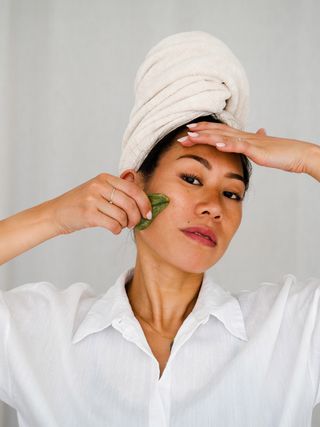
"While it can be used by all skin types and all skin conditions, it is perfect for those with dry skin to help the skin feel soft and smooth," details Garshick. Since it is a well-tolerated ingredient, her only warning is consistent with what she recommends to clients who use any new product—patch test first. This process allows you to gauge if you're sensitive or allergic to the formula as a whole.
What Are the Benefits of Panthenol?
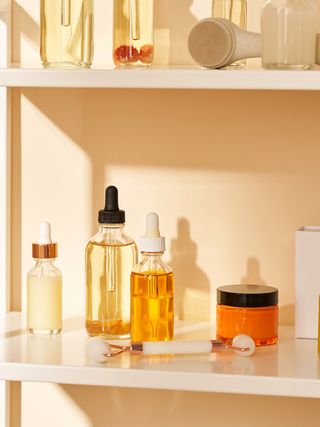
Garshick speaks of three significant benefits of this derivative. "In addition to being helpful and moisturizing the skin, it can also have benefits for the hair, helping to make it appear softer and smoother," she says. "It helps to retain moisture and prevents transepidermal water loss by supporting skin barrier function. Additionally, it can also help with wound healing."
Panthenol frequently is used as a liquid in formulas, which means it counts as a humectant. If you are not familiar, this class of ingredients attracts moisture from the environment and pulls it into the hair and skin. As such, you'll want to verify the formula includes occlusives. They seal all of that rich hydration into the subject in need of moisture.
Are There Drawbacks to Using It?

There are no significant drawbacks to speak of, which makes panthenol suitable for everyone, including our friends with sensitive skin. It's nontoxic, with minimal risk of adverse reactions.
Products with Panthenol to Try
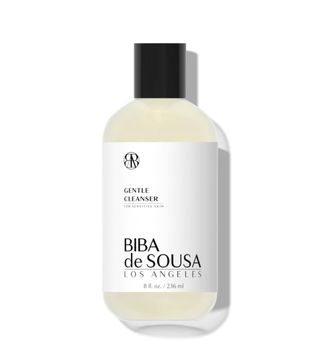
Celebrity esthetician Biba de Sousa is considered the leading expert in acne-friendly skincare. Her products for sensitive skin tend to fly under the radar but deserve praise, particularly her Gentle Cleanser. The gel formula leaves skin feeling cleansed, never stripped, thanks to hydrating ingredients like glycerin, honey, and panthenol. It is pH-balanced, non-comedogenic, and won't trigger conditions like eczema, rosacea, or psoriasis. Whenever I run out of this cleanser, my skin goes crazy, so I always keep a backup in my skincare arsenal.

Toners can be divisive. If you have one, odds are you cannot live without it in your routine. For anyone looking to dip their toe into the world of post-cleanse treatments, look no further than the Balancing Toner from Dr. Barbara Sturm. This pH-balanced hydrator contains the nurturing ingredients beta-glucan, hyaluronic acid, and panthenol. They work together to soothe redness, even skin tone, and boost hydration in parched skin. The formula has minimal ingredients and adheres to Dr. Sturm's meticulous standards.

The lightweight and hydrating serum from Medik8 counts panthenol as one of the key ingredients to restoring the supple and plump appearance of the skin. Working alongside hydrating powerhouse hyaluronic acid, six drops of this serum will help ease the appearance of fine lines. Since this product is made of humectants, be sure to follow up with a nourishing moisturizer to lock in all of the benefits.
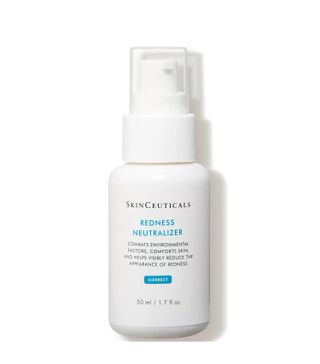
Nothing is more frustrating than trying to counteract redness in the skin. Since panthenol can help minimize the appearance of general inflammation, the Redness Neutralizer from cult-loved SkinCeuticals is a saving grace. It harnesses the power of panthenol, palmitoyl tripeptide-8, and several botanical extracts to protect against environmental aggressors that seek to wreak havoc on the skin. This cream visibly eases discoloration on the skin and layers beautifully under makeup.
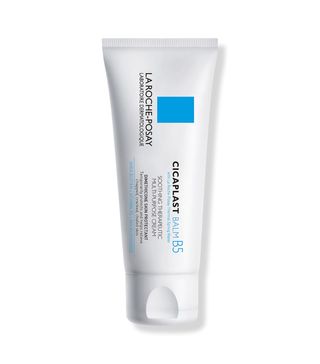
A multipurpose product that is sure to appease even the pickiest of skincare lovers, the Cicaplast Baume B5 from the French drugstore brand La Roche-Posay does it all. It features panthenol as the sixth ingredient on the list, meaning it has a higher concentration than most products on the market. You won't be disappointed by this dermatologist-tested skincare wonder.
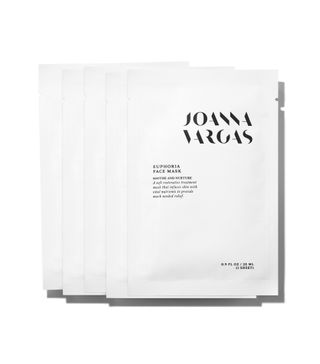
Joanna Vargas is no stranger to esthetics, and her product line proves she knows what our skin craves. Her Euphoria Face Masks use panthenol-B5 to deeply hydrate the skin as part of an ingredient blend that leaves complexions glowing. On her site, Vargas says these masks "take down the redness, and calm sensitivity and breakouts."
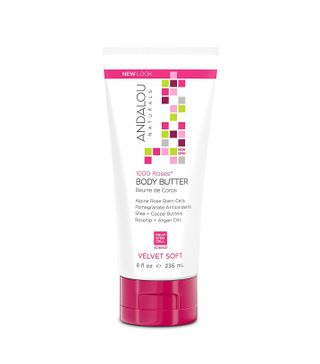
Garshick speaks highly of this rose-scented body butter from the clean brand Andalou Naturals. "Containing a blend of moisturizing and nourishing ingredients like rose-hip oil, argan oil, and shea and cocoa butter, this can be applied to help soften and smooth the skin. It also incorporates aloe vera as well as antioxidants to boost overall skin health," she says.

Taking care of the skin on your body is just as important as your complexion. This silky serum fights signs of aging with 5% niacinamide, 5% d-panthenol, and prickly pear extract. All of these are bioavailable, making them readily absorbed and tolerated by the skin.

Cosmetics, too, harness the power of panthenol. This ingredient adds hydration to formulas and can also serve as a way to control viscosity, allowing it to feel decadent on the face. Kosas's Revealer Concealer is a lightweight yet easily buildable product that has landed itself in countless celebrity makeup bags. As my go-to concealer, I can easily say I've noticed a more hydrated and supple complexion with consistent use.
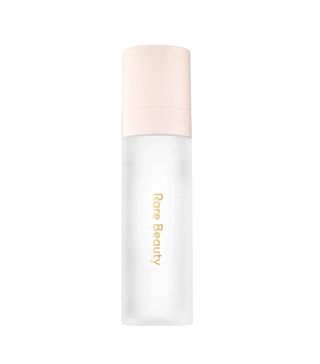
This Prime & Set Mist from Rare Beauty leaves skin looking radiant, never dull. Panthenol and a blend of botanicals and humectants hydrate the skin and keep cosmetics in place all day. Use it pre-makeup to lock in moisture, and spray it throughout the day when your skin feels parched.
Next: These 8 Foods Are the Worst for Rosacea—Here's What to Eat Instead
Disclaimer
This article is provided for informational purposes only and is not intended to be used in the place of advice of your physician or other medical professionals. You should always consult with your doctor or healthcare provider first with any health-related questions.

